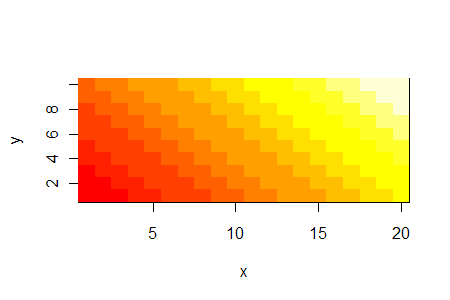This is an old revision of the document!
Table of Contents
R Tricks
removing trailing zeros from a vector
When you import data from the out put of other software, you might have trailing 0s at the end of each column:
> d0 [1] 69.444 70.889 86.667 95.667 83.444 78.333 67.889 [8] 56.000 49.222 40.333 37.889 31.889 30.333 26.667 [15] 22.444 23.111 20.889 22.000 20.111 19.778 20.778 [22] 19.667 17.333 19.333 19.000 16.333 14.444 13.889 [29] 18.000 21.778 23.556 23.889 28.778 40.000 48.667 [36] 55.889 66.667 78.889 72.222 84.778 68.778 69.444 [43] 0.000 0.000 0.000 0.000 0.000 0.000 0.000 [50] 0.000 0.000 0.000 0.000 0.000 0.000 0.000 [57] 0.000 0.000 0.000 0.000 0.000 0.000 0.000 [64] 0.000 0.000 0.000 0.000
To remove them, there could be many ways, but here is my one liner.
d0c <- d0[rev(cumsum(rev(d0)))>0]
Then the output is
> d0c [1] 69.444 70.889 86.667 95.667 83.444 78.333 67.889 [8] 56.000 49.222 40.333 37.889 31.889 30.333 26.667 [15] 22.444 23.111 20.889 22.000 20.111 19.778 20.778 [22] 19.667 17.333 19.333 19.000 16.333 14.444 13.889 [29] 18.000 21.778 23.556 23.889 28.778 40.000 48.667 [36] 55.889 66.667 78.889 72.222 84.778 68.778 69.444
Plotting a matrix data as a color-coded image
<sxh> #a 2Dplot, color coded. x ← c(1:20) y ← c(1:10) for(j in y){
for(i in x){
val <- i+j
if((i == 0) & (j == 0)) z <- val
elsez <- append(z, val)
}
}
z ← matrix(z, nrow=20, ncol=10) mat ← list(x, y, z) image(x, y, z) </sxh>
… a bit faster way calculation wise uses indexing. <sxh> width ← 10 height ← 20 x ← c(1:width) y ← c(1:height) xindex ←rep(x, length = width*height) yindex ← yindexing(x, y)
z ← xindex + yindex
z ← matrix(z, nrow=width, ncol=height) mat ← list(x, y, z) image(x, y, z)
yindexing ← function (x, y) {
for(i in y){
cr <- rep(i, length=length(x))
if (i==1) all <- cr
else all <- append(all, cr)
}
return (all)
} </sxh>
Inserting math formula & symbols in label or title
The easiest way is to use function expression(). For example,
plot(back$V2, type='l', xlab=expression(slice %.% time), ylab='intensity', xaxt="n", yaxt="n")
Inserts vertically centered dot in the x label between “slice” and “time”. You could check other available expressions by
?plotmath
More recent, but under development is using tikzDevice.
Variable Name to String
myfunc <- function(v1) {
deparse(substitute(v1))
}
myfunc(foo)
[1] "foo"

